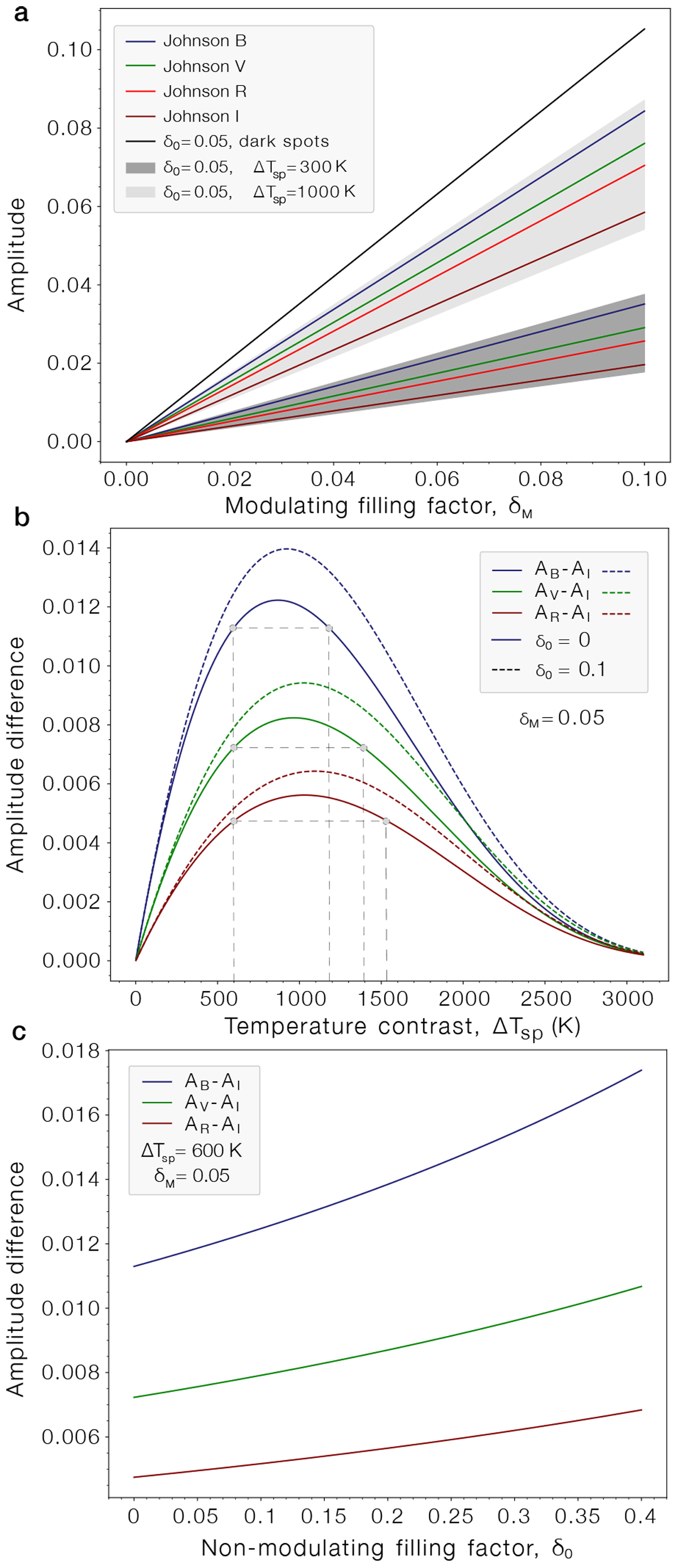Fig. 2

Graphical representation of Eq. (3) for the parameters of interest assuming a stellar photospheric temperature of Tph = 5000 K and a black-body for the spectral energy distribution of each surface element. (a) Photometric amplitude as a function of the modulating filling factor for different spot temperature contrasts. A non-modulating filling factor δ0 = 0.05 is employed, but adopting other values has negligible effect at this scale. The gray area covers the spectral range from 400 nm to 1 μm. (b) Difference in activity-induced amplitude for photometric bands BV R with respect to the I band as a function of spot temperature contrast. A value of 0.05 is adopted as modulating filling factor (δM) and examples for non-modulating filling factors of δ0 = 0 and 0.1 are shown. The gray lines illustrate how the bi-valuate nature of the temperature contrast effect can be resolved if more than two bands are used. (c) Difference in activity-induced amplitude for photometric bands BV R with respect to the I band as a function of the non-modulating filling factor. A modulating filling factor δM = 0.05 and a spot temperature contrast ΔTsp = 600 K are adopted.
Current usage metrics show cumulative count of Article Views (full-text article views including HTML views, PDF and ePub downloads, according to the available data) and Abstracts Views on Vision4Press platform.
Data correspond to usage on the plateform after 2015. The current usage metrics is available 48-96 hours after online publication and is updated daily on week days.
Initial download of the metrics may take a while.


